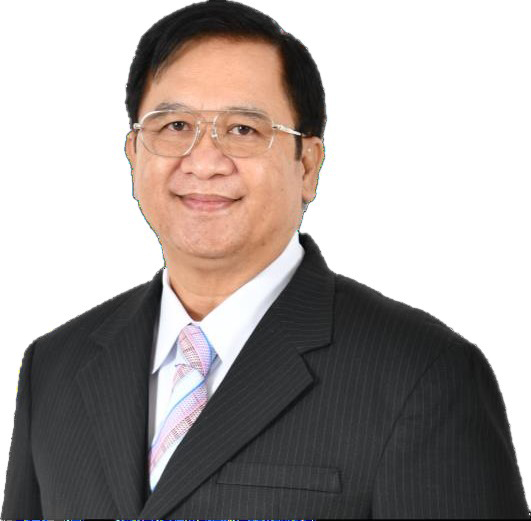'Choklat' Boys: Humanitarian Support Mission to East Timor (Part 2)
BARRACKS AND STRATEGY
GUEST COLUMNS

The Philippine Humanitarian Support Mission to East Timor (PhilHSMET) peacekeeping deployment was about helping East Timor. It also created an indelible mark about the virtues of the Filipino soldier that would spur future Philippine peacekeeping deployments. The knowledge gained during that period became the basis for the effective execution of the following deployments.
In October 1999, PhilHSMET moved to Manatuto Regency (District) and immediately established our headquarters in Manatuto proper. The majority of the district was burned down during the conflict, and this challenged the Filipinos to play a significant role in its recovery.
The third batch arrived on Nov. 14, 1999, which satisfied the promise of then President Joseph Ejercito Estrada to send a substantial number of Filipino troops to aid East Timor. Upon arrival, the 353 new arrivals familiarized themselves with the East Timorese people, history, culture, and language. This teaching boosted their ability to collaborate effectively for our aid efforts.
With 95 officers and 495 enlisted personnel, PhilHSMET positioned units in five sub-districts: In Laclo, then Captain Generoso Bolina supervised Operation “Kaagapay”, while then Major Valerio oversaw Operation “Bagwis” in Lalaeia; Then Major Danilo Estropia led Operation “Sandigan” in Natarbora; Then Major Henry Bumiltac took leadership of Laclubar, while then Major Guera oversaw operations at Soibada. Each detachment has a specific responsibility for ensuring that our efforts reach as many Timorese as possible.
On Feb. 1, 2001, PhilHSMET transitioned to become the Philippine Battalion (PhilBatt) under the United Nations Transitional Administration in East Timor (UNTAET) and our role moved to security. Our successful transition to PhilBatt showed the world that Filipino peacekeepers were not only adaptable but also reliable in any situation.
During its existence, the medical and dental units of PhilHSMET carried 19,301 medical surgeries, consultations, and treatments, as well as 1,595 dental surgeries, consultations, and treatments. There was an absence of healthcare owing to the fighting that resulted in the burning of the clinics and hospitals and the evacuation of the health professionals. Thus, our actions in improving their health conditions were crucial.
Moreover, PhilHSMET’s engineering unit worked on infrastructure rehabilitation. With the help of the International Forces in East Timor (INTERFET), water and electrical systems were restored in Soibada. In the whole of Manatuto, the engineers restored 33 school buildings. The tasks performed also included clearing landslides and mending the Natarbora-Viqueque road to ensure other responders could provide much-needed aid to these areas. We also repaired the water system in Laclubar and renovated one of the medical clinics into a six-bed infirmary. In addition, our engineers conducted surveys and technical inspections for NGOs and UN agencies to ensure that the district’s reconstruction progressed. Furthermore, our Explosive Ordnance Disposal (EOD) team cleared unexploded ordnance ensuring the safety of the local population. Such initiatives were essential for the locals, giving hope after months of instability.
Reflecting on our actions, it was evident that the collaborative strategy was fundamental to our success. PhilHSMET contributed skilled labor, equipment, and time, while NGO and UN agencies offered medicines, materials, and other resources. Together, PhilHSMET rehabilitated essential utilities, provided health services, and restored hope to the East Timorese people. The success of the PhilHSMET strategy of networking, linkaging, and collaboration was recognized and adopted as the Civil-Military Affairs strategy by the Peacekeeping Force, UNTAET.
PhilHSMET displayed the best qualities of the Filipino soldier. In East Timor, our forces exhibited incredible versatility, tailoring their approaches to the specific needs of each situation. They carefully established confidence with the local populace, cementing their reputation as dependable and capable. Their adaptability, tenacity, and commitment to perfection were visible in every endeavor, demonstrating their rigorous training and uncompromising professionalism. This professionalism enabled them to approach sensitive circumstances with care and objectivity. Their operational experience enabled them to successfully handle the mission’s challenging situations.
Our achievement in East Timor was clearly stated by SSgt Segum RM Jr: “Sa lahat ng kahirapan na naranasan ko [sa East Timor], masaya ako dahil nakatulong ako sa mga East Timorese.” His words captured the core of our mission. Yes, we were awarded achievement and commendation medals for our individual and unit efforts and we proudly wore them on our chests. But the greatest satisfaction is the help we provided to countless Timorese in their time of need, and this medal we proudly wear in our hearts.
The importance of collaboration and a comprehensive strategy for peacekeeping were the keys to PhilHSMET’s success. Our ability to adapt to challenges and work with international agencies resulted in the peace we helped establish. As we celebrate the 25th anniversary of PhilHSMET, we honor not just the mission but the legacy of hope, resilience, and commitment to peace that it left behind.
(In memory of PhilHSMET Mission Commander - BGEN Felix Cabreros PA)
(Lt. Gen. Aurelio B. Baladad (Ret) served as the 8th commander of the Eastern Mindanao Command, the 32nd commander of the 3rd Infantry (Spearhead) Division, and the former deputy chief of staff for Operations, J3 of the AFP. He is now the VP for cooperative planning and marketing of PAFCPIC, a cooperative serving the active and retired AFP personnel.)